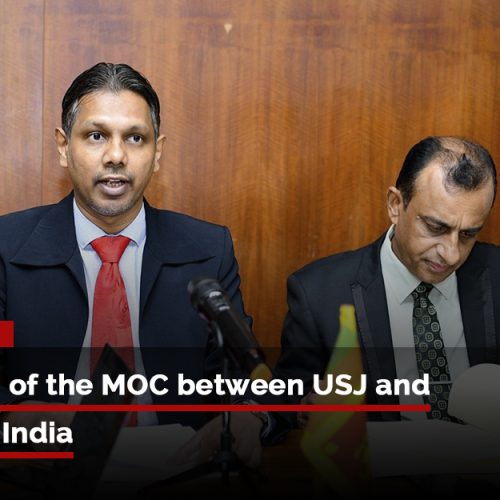In the first part of this post we discussed Sinhala and Hindu New Year as Traditional and Cultural Festival. In this post we discuss Sinhala and Hindu New Year Rituals.
New Year Rituals
Amunugama (1990) divides the New Year rituals for four different parts.
- The old year
- The interim period between the ‘Old’ and the ‘New’ year
- The New Year Festivities and
- Purification for the coming year
The first two rituals belong to the; old year’ whereas the latter two rituals belong to the “New Year’. All the activities of the past year are to be considered as past or gone. The New Year should be ‘New’ in real sense of the word. Therefore, all make it to a point to complete all their work before the ‘interim period’ – ‘nonagathaya’ begins. Even children are advised not to engage in any activity and the elders spend their time without engaging in any serious activity. They consider the ‘Transition time’ is so inauspicious that no work should begin during that time. After the transition time is over it is the renewal; the beginning of a new cycle.
Specific Activities at auspicious times
When deciding the time for each and every activity the following are considered.
- Auspicious day
- Auspicious Time
- Auspicious Direction
- Auspicious Color
- Auspicious leaves of certain trees
For Ex. Preparing First Meal: Friday, April 16 at 5.41 am clad in gold color, facing North, light the hearth and prepare milk rice mixed with ghee and jiggery.
Bathing for the passing year and viewing the old moon
Rituals connected with the New Year commence with bathing on the last day of the “old year’, that is on 12th April and viewing the moon on the same night. In many village temples, the chiming of the bell is accompanied with the beating of drums (Hewisi) to make the people aware of the exact auspicious time to perform each ritual. In taking this ceremonial bath on the last day of the old year the people apply Nanu a herbal mixture, on their head and body before bathing. This herbal, according to belief has a cathartic effect on the body and the soul. So purification ritual is attached to the concepts of ‘purity’ and ‘killa’ in the Indian Tradition. Natha Devala of the Temple of the Tooth was selected as the venue for the distribution of oils and Nanu during Kandyan Kingdom because of the belief that God Natha has curative power.
The dawn of the New Year and the transition time
The ending of the old year and the beginning of the new year take place several hour apart from one another and the astrologers count this time span is usually around 12 hours and 48 minutes, which starts when the Sun starts to cross the astrological boundary between the ‘House of Pisces’ and ‘House of Aries’ and ends when the crossing is complete. The halfway point between this transition movement (sankranthi) is considered as the dawn of the New Year. This period is referred to as the Nonagathaya or the neutral period. During this time, according to tradition the Sri Lankans are encouraged to refrain from material pursuits, and engage solely in religious activities. This time is called ‘Nonagathaya’ during which people devote their time in performing religious practices. It is for this reason it is also called ‘Punya Kalaya’ the time for meritorious activities, when people stop all their day-to-day activities, and visit the temple t accrue merit and get their blessings from the priests in the temple.
Preparing food
Preparing food has been another prominent element. Before preparing food the New Year is celebrated with boiling milk in a newly earthen pot symbolizing prosperity as the spillover from all sides of the pot. After that only the k rice is prepared. People get ready to prepare a series of sweet meats for the New Year to serve the visitors, to gift the neighbors and to take when they visit others. kokis’, ‘aasmee’, different varieties of kewum (oil cake). “aluwa’ and ‘weli thalapa’ to name a few of these famous sweet meats.
Commencement of work, Ganu Denu and having food
The children begin to work with their lessons because in the New Year it is expected that they should perform well in their studies. The elderly people begin their work according to their profession in a symbolic manner. For example, a farmer might go to the paddy field does some planting activity. A teacher might write some verse to commence his work for the New Year.
Then there is the time for greeting the elders with a sheaf of betel leaves. The members of the family who could afford buy gifts for the others and mostly these are clothes. While offering betel leaves the New Year gifts are also presented. The elders give their blessings for the young ones for the coming year. Exchanging money in a symbolic manner is another ritual. Many people prefer to exchange money with a person who is successful in earning and saving money in the last year. So, the prosperous, wealthy, upper class and thrifty people have better opportunities and demands for this than any other l is considered the hour to commence business to have profits.
Some villagers in rural areas still practice drawing water from the well as the first activity of the year. So they do exchange their give and take practice with the well that has been supplying water for the last year. This may be symbolic again in two ways. First, it is a payment of gratitude for supplying water continuously for the entire year passed; second water is the life giving source for the mankind throughout history. Without water no one can live. To highlight that aspect also priority is given to the well. To drive away the ‘evil’; if there is any, is another thing the tradition expects. A tree that exudes milk is tapped and that concludes this set of rituals.
Finally, it is time for the family meal at the table. This ritual marks the harmony and togetherness of the family. All sit together to enjoy the milk rice prepared at the auspicious time by lighting the hearth for the New Year Lighting of the hearth symbolizes the continuity of life. The table is laid with sweet meats and “lunu miris’ (prepared using shredded onion, chilies, lime and salts) that adds taste to milk rice.
Visiting relatives, neighbors and kith and kith and Kin
After the basic rituals are over the villagers begin to visit immediate relatives live close by and friends or neighbors while going to these places it is customary to take a bear or betel leaves to worship the elders, gifts if there are any, and sweet meats prepared or cake or biscuits since the Sinhalese believe that going to a house in the New Year with empty hands is an impertinent act. After spending a few amicable moments the visitors return enjoying the hospitality or the hosts. Then the turn begins to visit the distant relatives and this lasts sometimes even a week after the New Year is dawned.
Applying oil on head and bathing-purification tor the coming year
Applying oil on heads is another ritual that is associated with the New Year festival. In any cases it is the most eldest family member who anoints the herbal oil prescribed specifically for the year on the heads of the others. There are some instances in which the anointment is done at the village temple where all the villages are gathered to have anointed oil on their heads by the priest in the temple. At the ‘Temple of the Tooth’ Kandy even the tusker who carries the relies of the Lord Buddha and leading tuskers in many other Raja Maha Viharayas too are anointed herbal oil at the auspicious time.
Leaving for jobs
In the set of traditional rituals the villager began his work at the auspicious time as the New Year dawned. But the recent phenomenon has been that there is a specific time to leave for the jobs. After the westerners have introduced novel administrative system there has been a growing number of public and private sector employees who are permanently or temporarily residing in the urban areas. These people either go to their respective rural areas for the festive season or visit the relatives and kith and kin in the rural areas. After this vacation the people should begin their work in a novel way, so the astrologers have devised an auspicious time for the people in rural areas to leave for the respective job in an auspicious time.
Read First Part of this Post – Sinhala and Hindu New year as a Cultural Festival
http://www.sjp.ac.lk/culture-arts/sinhala-and-hindu-new-year-traditional-and-cultural-festival/
 By
By
Dr. Jayantha Jayasiri
Senior Lecturer
Department of Sociology and Anthropology
Faculty of Humanities and Social Sciences
University of Sri Jayewardenepura












